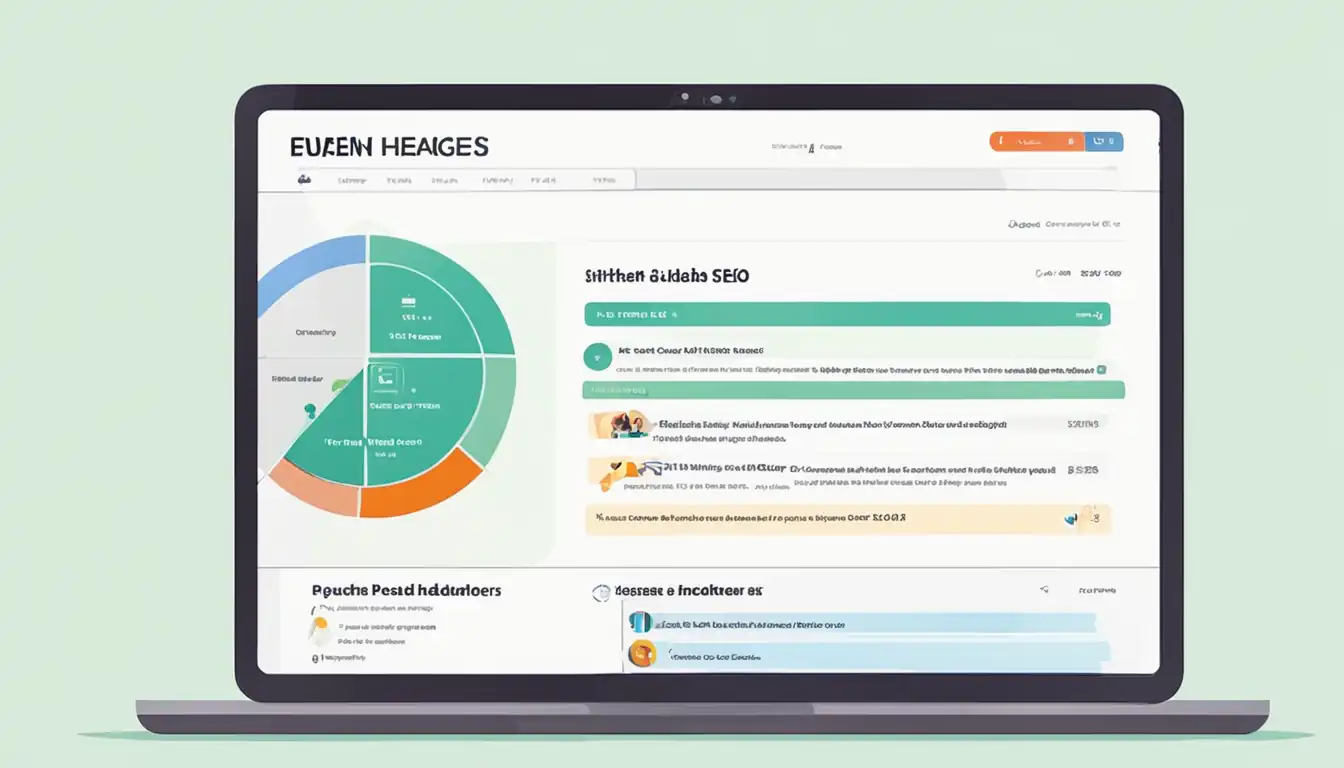Mastering Keyword Placement: Elevate Your SEO Game

In the vast world of SEO, mastering keyword placement is like finding the missing piece to your puzzle. It's not just about sprinkling keywords like confetti, but strategically weaving them into your content to boost your search engine rankings. Let's dive into the art of keyword placement and how it can elevate your SEO game to new heights.
The Essence of Keyword Placement in SEO
Why It's More Than Just Stuffing
In the realm of SEO, keyword placement is often misunderstood as simply stuffing keywords into content to rank higher on search engine results pages. However, mastering keyword placement goes beyond this simplistic approach. It involves strategically integrating relevant keywords into content in a natural and organic way that enhances the user experience while signaling to search engines the relevance of the content.
The Evolution of Keyword Relevance
Keyword relevance has evolved significantly over the years. In the early days of SEO, keyword density and exact match keywords were the primary focus. However, search engines have become more sophisticated, placing greater emphasis on context, user intent, and semantic relevance. This shift has led to the importance of using long-tail keywords, latent semantic indexing (LSI) keywords, and natural language in content to align with how users search for information online.
Crafting Content with Strategic Keyword Placement
In the realm of SEO, mastering keyword placement is like finding the perfect seasoning for a dish – it can make all the difference in how your content is perceived by search engines. By strategically placing keywords throughout your content, you can elevate your SEO game and increase your chances of ranking higher in search results.
Finding the Sweet Spot in Your Text
When it comes to keyword placement, it's essential to find the sweet spot in your text. Keywords should be naturally integrated into your content, flowing seamlessly within the context of your writing. Avoid stuffing keywords unnaturally, as this can not only harm your SEO efforts but also turn off your readers.
Pro Tip: Aim to place your primary keyword in the title, meta description, headers, and the first paragraph of your content. This signals to search engines what your content is about right from the start.
The Role of LSI Keywords
LSI (Latent Semantic Indexing) keywords play a crucial role in enhancing the relevance of your content to search engines. These are keywords that are semantically related to your primary keyword, providing context and depth to your content. By incorporating LSI keywords naturally throughout your text, you can signal to search engines that your content is comprehensive and authoritative on the topic.
Pro Tip: Use tools like Google's Keyword Planner or LSIGraph to identify relevant LSI keywords to include in your content. Remember, the key is to use them naturally and not force them into your writing.
By strategically crafting your content with the right keyword placement, you can boost your SEO efforts and attract more organic traffic to your website. Remember, quality content that provides value to your readers should always be your top priority. Mastering keyword placement is just one piece of the SEO puzzle, but when done right, it can make a significant impact on your search engine rankings.
Title Tags and Meta Descriptions: Your First Impression
Crafting Compelling Title Tags
Crafting compelling title tags is like creating the perfect headline for a newspaper article - it needs to grab attention, spark curiosity, and entice the reader to click through. Title tags are the first thing users see in search engine results, making them a crucial element of your SEO strategy.
To master keyword placement in title tags, start by including your target keyword at the beginning of the tag. This helps search engines understand the topic of your page right away. However, don't sacrifice readability for the sake of keyword placement. Your title tag should still make sense and be enticing to users.
Utilize power words and action verbs to make your title tag more compelling. Words like "ultimate," "essential," and "proven" can pique curiosity and encourage clicks. Additionally, consider including numbers or specific data points to add credibility and relevance to your title tag.
Remember, title tags have a character limit, so keep them concise and to the point. Aim for around 50-60 characters to ensure your entire title tag is displayed in search results. Lastly, make sure each title tag is unique and accurately reflects the content of the corresponding page.
Meta Descriptions That Hook Readers
While meta descriptions don't directly impact search engine rankings, they play a crucial role in enticing users to click through to your website. Meta descriptions are like a sneak peek of your content, providing users with a brief summary of what they can expect to find on your page.
To create meta descriptions that hook readers, start by incorporating your target keyword naturally. While meta descriptions don't have a direct impact on SEO, including keywords can help reinforce the relevance of your content to search engines.
Focus on creating a compelling and engaging meta description that encourages users to click through. Use persuasive language, ask questions, or create a sense of urgency to entice users to learn more. Additionally, consider highlighting unique selling points or benefits to differentiate your content from competitors.
Keep your meta descriptions concise, aiming for around 150-160 characters to ensure they are fully displayed in search results. Avoid duplicating meta descriptions across multiple pages, as each description should be tailored to the specific content it represents.
Crafting compelling title tags and meta descriptions is a key aspect of mastering keyword placement and elevating your SEO game. By optimizing these elements, you can improve click-through rates, drive more organic traffic to your site, and ultimately boost your search engine rankings.
Headers and Subheaders: Structuring for Success

Using H1 to H6 Tags Effectively
In the world of SEO, headers and subheaders play a crucial role in not only organizing your content but also in boosting your search engine rankings. When it comes to optimizing your website for search engines, using H1 to H6 tags effectively can make a significant difference in how your content is perceived and ranked.
H1 Tag: The Powerhouse Header
The H1 tag is like the captain of a ship – it leads the way and sets the tone for the rest of the content. This tag should contain the main keyword you are targeting for that particular page. By placing your primary keyword in the H1 tag, you are signaling to search engines what the main topic of your page is. Remember, the H1 tag should only be used once per page to maintain its impact.
H2-H6 Tags: The Supporting Cast
While the H1 tag takes the spotlight, the H2 to H6 tags play a crucial role in supporting the structure of your content. These tags help break down your content into digestible sections, making it easier for both readers and search engines to understand the hierarchy of information on your page.
Balancing SEO and Readability
When it comes to using headers and subheaders for SEO, it's essential to strike a balance between optimization and readability. While it's crucial to include relevant keywords in your headers, it's equally important to ensure that your headers flow naturally and make sense to human readers.
By incorporating keywords strategically into your headers and subheaders, you can improve your chances of ranking higher in search engine results while also making your content more engaging and accessible to your audience. Remember, the goal is not just to please search engines but also to provide valuable and informative content to your readers.
In conclusion, mastering the art of keyword placement in headers and subheaders can elevate your SEO game and help you reach a wider audience online. By using H1 to H6 tags effectively and balancing SEO with readability, you can create content that not only ranks well in search engines but also resonates with your target audience.
Long-tail keywords play a crucial role in enhancing your SEO strategy. These longer, more specific phrases may have lower search volumes, but they often result in higher conversion rates due to their specificity.
Identifying Your Long-Tail Opportunities
When identifying long-tail keyword opportunities, consider the following strategies:
Use Keyword Research Tools: Utilize tools like SEMrush, Ahrefs, or Google Keyword Planner to identify relevant long-tail keywords in your niche.
Analyze Competitor Keywords: Study your competitors' content and identify long-tail keywords they are ranking for. This can provide valuable insights into potential opportunities for your own content.
Focus on User Intent: Understand the intent behind the search queries to create content that aligns with what users are looking for. Long-tail keywords often reflect specific user needs or questions.
Incorporating Long-Tail Keywords Naturally
Once you have identified your long-tail keyword opportunities, it's essential to incorporate them naturally into your content. Here are some tips to ensure seamless integration:
Integrate Keywords Organically: Avoid keyword stuffing by incorporating long-tail keywords naturally within your content. Focus on creating valuable, informative content that naturally includes the targeted keywords.
Use Keywords in Headings and Subheadings: Incorporate long-tail keywords in headings and subheadings to signal to search engines the relevance of your content.
Optimize Meta Tags and URLs: Include long-tail keywords in meta tags, meta descriptions, and URLs to improve visibility in search results.
By identifying and incorporating long-tail keywords effectively, you can elevate your SEO game and drive targeted traffic to your website.
Beyond Text: Optimizing Images and Videos

In the world of SEO, optimizing your website goes beyond just text. Images and videos play a crucial role in engaging users and improving your search engine rankings. Let's delve into how you can optimize these visual elements to elevate your SEO game.
Alt Text and Image Titles
Alt text, also known as alternative text, is a crucial element for optimizing images on your website. This text provides a description of the image for users who are visually impaired or unable to load images on their browsers. From an SEO perspective, alt text helps search engines understand the content of your images, improving your chances of ranking higher in image searches.
When crafting alt text, be descriptive and concise. Include relevant keywords that accurately describe the image while avoiding keyword stuffing. Remember, alt text is meant to enhance accessibility and provide context, so prioritize clarity over keyword density.
Similarly, image titles play a role in SEO optimization. When naming your image files, use descriptive and keyword-rich titles that reflect the content of the image. Avoid generic file names like "IMG001.jpg" and instead opt for titles that are specific and relevant to your content.
By optimizing your alt text and image titles, you not only improve the accessibility of your website but also boost your SEO efforts by providing search engines with valuable information about your visual content.
Video Descriptions and Tags
Videos are a powerful tool for engaging users and conveying information effectively. When it comes to SEO, optimizing your videos involves more than just creating compelling content. Paying attention to video descriptions and tags can significantly impact your search engine rankings.
In your video descriptions, provide a detailed summary of the video content, including relevant keywords and phrases. This text helps search engines understand the context of your video and can improve its visibility in search results. Be sure to include links to relevant pages on your website to drive traffic and enhance your SEO strategy.
Tags are another essential element for optimizing videos. These keywords help categorize your content and make it more discoverable to users searching for related topics. Include a mix of broad and specific tags that accurately represent the content of your video, maximizing its reach and engagement.
By optimizing your video descriptions and tags, you can enhance the visibility of your videos in search results and attract a larger audience to your website. Incorporating these strategies into your SEO efforts will help you master keyword placement and elevate your overall SEO game.
Internal Linking: The SEO Connectivity

Internal linking plays a crucial role in enhancing your website's SEO performance. By strategically linking your content internally, you can guide both users and search engines to navigate through your site efficiently. This not only improves user experience but also helps search engines understand the structure and relevance of your content. Let's delve into the intricacies of internal linking to elevate your SEO game.
Anchor Texts That Work
When incorporating internal links within your content, the anchor text you choose is paramount. Anchor texts serve as clickable links that direct users to other pages on your website. Opt for descriptive anchor texts that provide context about the linked page's content. Avoid generic phrases like "click here" or "read more," as they lack specificity and do little to enhance your SEO.
Furthermore, utilize relevant keywords in your anchor texts to signal to search engines the topic of the linked page. By incorporating targeted keywords naturally within your anchor texts, you can boost the visibility of your content for those specific search queries. Remember, the goal is to provide value to both users and search engines through informative and keyword-rich anchor texts.
Mapping Out Your Internal Links
To effectively leverage internal linking for SEO, it's essential to map out a cohesive linking strategy. Start by conducting a thorough audit of your website's existing content and identifying key pages that can benefit from internal links. Consider the hierarchy of your content and prioritize linking to essential pages with high-value information.
Create a logical flow of internal links that guides users through related topics and pages within your website. By establishing a clear pathway for users to navigate from one page to another, you can increase engagement and reduce bounce rates. Additionally, ensure that each internal link adds value to the user's journey by directing them to relevant and complementary content.
In conclusion, mastering internal linking is a fundamental aspect of optimizing your website for SEO success. By strategically incorporating descriptive anchor texts and mapping out a cohesive internal linking strategy, you can enhance the connectivity of your content and improve your site's visibility in search engine results. Elevate your SEO game by harnessing the power of internal linking to create a seamless user experience and boost your website's organic traffic.
Measuring the Impact of Your Keyword Placement
In the world of SEO, tracking the performance of your keywords is crucial to understanding what is working and what needs improvement. By measuring the impact of your keyword placement, you can fine-tune your strategy for optimal results.
Tools for Tracking Keyword Performance
Utilizing the right tools can make all the difference when it comes to monitoring the success of your keywords. Tools like Google Analytics, SEMrush, Ahrefs, and Moz are invaluable resources for tracking keyword rankings, organic traffic, and overall website performance.
Google Analytics: This free tool provides detailed insights into your website's traffic sources, user behavior, and keyword performance. By analyzing the data provided by Google Analytics, you can identify which keywords are driving the most traffic to your site and adjust your strategy accordingly.
SEMrush: Known for its comprehensive keyword research and competitive analysis features, SEMrush is a go-to tool for tracking keyword performance. With SEMrush, you can monitor keyword rankings, organic traffic, and backlink profiles to gain a holistic view of your SEO efforts.
Ahrefs: Ahrefs is another powerful tool for tracking keyword performance and conducting in-depth competitor analysis. With features like Site Explorer and Keywords Explorer, Ahrefs provides valuable insights into keyword rankings, search volume, and keyword difficulty.
Moz: Moz offers a suite of SEO tools, including Moz Pro and Moz Local, to help you track keyword performance and improve your overall SEO strategy. With features like Rank Tracker and Keyword Explorer, Moz can help you identify keyword opportunities and optimize your content for better search visibility.
Adjusting Your Strategy Based on Data
Once you have gathered data on your keyword performance, it's essential to analyze the results and make informed decisions about your SEO strategy. By adjusting your approach based on data-driven insights, you can maximize the impact of your keyword placement.
Monitor Keyword Rankings: Keep a close eye on how your target keywords are ranking in search engine results pages (SERPs). If certain keywords are consistently underperforming, consider revising your content or targeting different keywords with higher search volume and lower competition.
Track Organic Traffic: Measure the impact of your keyword placement by tracking changes in organic traffic over time. If you notice a decline in organic traffic for specific keywords, it may be time to reevaluate your content strategy and make necessary adjustments to improve visibility.
Optimize Meta Tags and Content: Use keyword performance data to optimize meta tags, headings, and content throughout your website. By incorporating high-performing keywords strategically, you can increase your chances of ranking higher in search results and attracting more organic traffic.
Stay Updated on Algorithm Changes: Keep abreast of search engine algorithm updates and industry trends to ensure your SEO strategy remains effective. By adapting to changes in search algorithms and consumer behavior, you can stay ahead of the competition and maintain a strong online presence.
By measuring the impact of your keyword placement and adjusting your strategy based on data-driven insights, you can elevate your SEO game and achieve long-term success in the digital landscape.
Conclusion
So, there you have it - the key to unlocking the potential of your SEO strategy lies in mastering keyword placement. By understanding the essence of keyword relevance, crafting content strategically, optimizing title tags and meta descriptions, structuring headers effectively, utilizing long-tail keywords, optimizing images and videos, implementing internal linking, and measuring performance, you can take your SEO efforts to the next level. Elevate your SEO game by harnessing the power of keyword placement and watch your website soar to the top of search engine results.